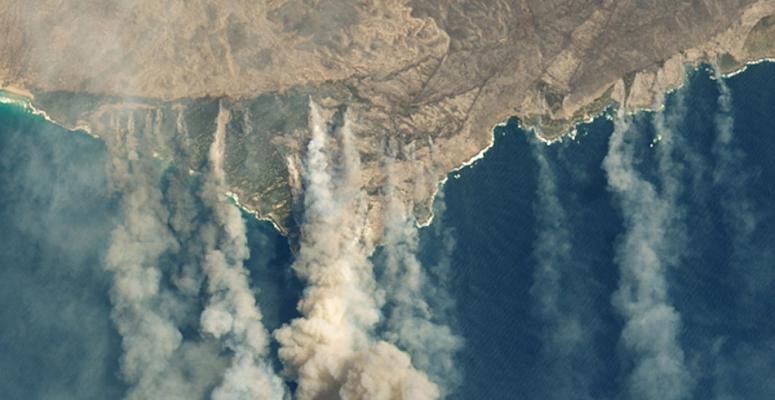Wildfires are tied to the climate, both in how the climate (now and in the future) may impact fire risk and in how wildfires can affect the climate.
For example, long-term warming and drying trends are expected to increase the risk of wildfires and may also alter where and when wildfires are most likely to occur. Conversely, today’s megafires can loft sun-reflecting aerosols high into the atmosphere where they can collectively cool Earth in the short term. A clearer picture of these interactions is important as we seek to understand the full impacts of the fires happening today and plan for the threats of tomorrow.
The challenge:
An increase in wildfires is a significant risk associated with climate change, and yet climate models typically lack the resolution needed to simulate them. Global models, constrained by available supercomputing resources, typically have a resolution of around 100 kilometers between grid points, which means they cannot readily capture smaller-scale phenomena. Accurately simulating wildfires, on the other hand, requires representations of terrain, vegetation, and other important factors at finer scales. Climate models can also struggle to represent interactions between clouds and aerosols, which are emitted as biomass burns.
Actionable science:
Despite the relatively coarse resolution of climate models, the NSF NCAR-based Community Earth System Model (CESM) has been used to investigate how extreme fire risk is likely to change over the globe in the coming decades by evaluating changes to weather-related factors that contribute to fire risk, including temperatures and relative humidity.
NSF NCAR scientists are also working to better understand changes in land cover that can greatly influence wildfires. Using the land component of CESM, they are focusing on detailed information about vegetation, such as size and type, and including more realistic ecological processes, such as succession. This new modeling capability of explicitly simulating wildfires allows scientists to better understand how wildfires in the future will change the landscape — including shifts to the types of vegetation that regrow — and how that changed landscape will in turn affect future wildfires. Modeling this dynamic interaction between climate, vegetation and wildfire is essential to our ability to capture and explore the impacts of fire on our Earth system.
Finally, NSF NCAR scientists are using CESM to understand how wildfire emissions interact with the climate. For example, a recent study found that the smoke emitted by the enormous wildfires that engulfed the Australian bush in 2020 cooled the Earth by about 0.06 degrees Celsius, eclipsing the slight warming effect of COVID-19 lockdowns, which reduced sunlight-reflecting aerosol emissions.

